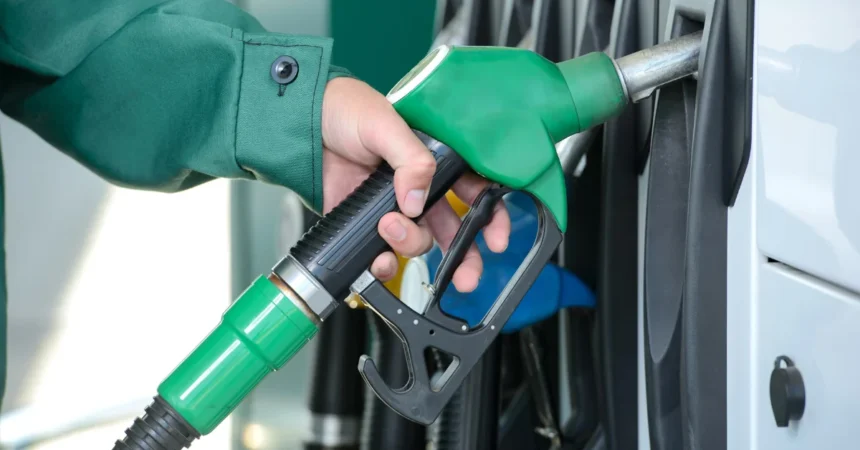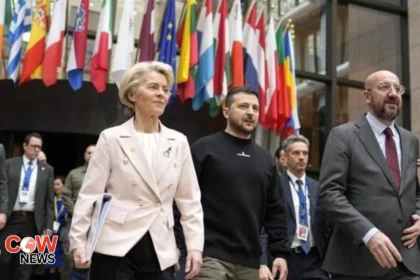Pakistan is on the brink of another fuel price hike, with petrol and diesel prices expected to see a significant increase in the coming week. This potential rise in fuel costs is linked to a combination of global market fluctuations, the international price of crude oil, and the depreciation of the Pakistani rupee. These factors are putting increased pressure on the country’s fuel pricing system, with potentially wide-reaching effects on transportation costs, inflation, and everyday expenses for Pakistani consumers.
Global Market Trends Driving Price Increases
The international crude oil market is a key driver behind this expected surge in petrol and diesel prices. Over the past few months, global oil prices have steadily increased, driven by several factors. The Organization of the Petroleum Exporting Countries (OPEC), along with non-OPEC members like Russia, have continued to limit oil production, restricting the global supply of crude oil. This coordinated reduction in output has pushed oil prices higher, as demand for oil remains strong in many regions, particularly in Asia and the United States.
Additionally, geopolitical tensions in major oil-producing regions have added to the uncertainty in the market. Conflicts in the Middle East, sanctions on major oil-exporting countries like Iran, and other disruptions have contributed to supply constraints, further driving up global oil prices.
The weakening of the Pakistani rupee against the US dollar is another significant factor influencing the increase in fuel prices. Since Pakistan imports the majority of its petroleum products, the exchange rate plays a critical role in determining local fuel costs. As the rupee continues to lose value against the dollar, the cost of importing fuel rises, leading to higher prices at the pump for Pakistani consumers.
Government Adjustments and Fuel Price Mechanism
In Pakistan, the government revises fuel prices every two weeks based on a pricing formula that includes the international price of crude oil, the exchange rate, and government taxes and levies. This pricing mechanism is designed to pass through changes in global fuel prices to consumers, ensuring that local prices reflect international market conditions.
Currently, the government levies several taxes on petroleum products, including the Petroleum Levy and the General Sales Tax (GST). These taxes contribute to the final retail price of petrol and diesel. In recent months, the government has faced a challenging balancing act: on one hand, it is under pressure to raise additional revenue through taxes, but on the other hand, higher fuel prices can exacerbate inflation and increase the cost of living for ordinary Pakistanis.
Impact on Transportation and Inflation
The expected increase in petrol and diesel prices will have a direct impact on transportation costs, which in turn will ripple through the economy and contribute to rising inflation. In Pakistan, fuel prices are closely linked to the cost of transportation, as most goods are moved by road. When fuel prices rise, the cost of transporting goods across the country increases, leading to higher prices for essential items such as food, clothing, and other consumer products.
Public transportation services, including buses, vans, and ride-hailing platforms, are also likely to raise their fares in response to the fuel price hike. This could disproportionately affect lower- and middle-income households that rely on public transport for their daily commutes. The increase in transportation costs may also put additional pressure on small and medium-sized businesses, many of which operate on tight profit margins and may struggle to absorb higher fuel costs.
Moreover, the increase in fuel prices is expected to contribute to the overall inflation rate, which has already been rising due to a combination of factors, including currency devaluation, supply chain disruptions, and the global economic impact of the COVID-19 pandemic. For consumers, higher inflation means reduced purchasing power, as the cost of basic necessities rises faster than income levels.
The Role of the Petroleum Development Levy
The Petroleum Development Levy (PDL) is another important component of Pakistan’s fuel pricing system. The government has been using the PDL as a tool to generate additional revenue, particularly in the wake of the financial challenges posed by the pandemic and the need for fiscal consolidation. In recent months, the government has increased the PDL on petrol and diesel as part of its efforts to meet revenue targets set by the International Monetary Fund (IMF) under its loan program.
While the PDL provides the government with much-needed revenue, it also contributes to higher fuel prices for consumers. With the anticipated increase in fuel prices next week, it is likely that the PDL will once again be adjusted upward, further adding to the cost of petrol and diesel.
Economic Challenges and Public Concerns
The potential fuel price hike comes at a time when Pakistan is already grappling with a range of economic challenges. High inflation, slow economic growth, and a large fiscal deficit have put pressure on the government to implement tough measures to stabilize the economy. However, these measures, including fuel price increases, are often unpopular with the public, as they directly affect the cost of living.
For many Pakistanis, rising fuel prices are a source of frustration and anxiety, particularly as they struggle to make ends meet in an environment of high inflation and stagnant wages. The government has faced protests and public outcry over previous fuel price hikes, with critics arguing that the burden of rising costs is being unfairly placed on ordinary citizens.
In response to these concerns, the government has implemented various relief measures, such as targeted subsidies for low-income households and efforts to control inflation through monetary policy. However, these measures have had limited success in alleviating the impact of rising fuel prices on the general population.
Possible Long-Term Solutions
In the face of recurring fuel price increases, there is a growing recognition that Pakistan needs to explore long-term solutions to reduce its dependence on imported petroleum products. One potential avenue is the development of alternative energy sources, such as renewable energy and domestic natural gas production.
Pakistan has significant potential for renewable energy development, particularly in the areas of solar and wind power. The government has already set ambitious targets for increasing the share of renewable energy in the country’s energy mix, with the goal of reducing reliance on imported fuel and lowering greenhouse gas emissions.
In addition to renewable energy, there is also potential for expanding domestic natural gas production. Pakistan has considerable reserves of natural gas, and increased exploration and development of these resources could help to reduce the country’s reliance on imported fuel. However, the development of natural gas infrastructure will require significant investment and time.
Another potential solution is improving energy efficiency across various sectors of the economy. By reducing the overall demand for fuel, Pakistan could lessen the impact of global oil price fluctuations on its economy. Energy efficiency measures could include upgrading the country’s transportation infrastructure, promoting the use of electric vehicles, and encouraging industries to adopt more energy-efficient practices.
While these long-term solutions hold promise, they will take time to implement and will require sustained investment and political commitment. In the meantime, Pakistan will continue to be vulnerable to global oil price fluctuations, and fuel price hikes are likely to remain a recurring challenge for the foreseeable future.
#FuelPriceHike #PetrolPriceIncrease #PakistanEconomy #DieselPriceHike #Inflation #FuelCrisis #OilPrices #PetroleumDevelopmentLevy #TransportCosts







